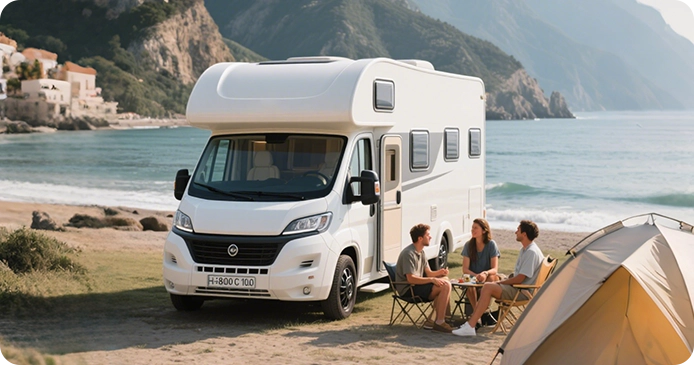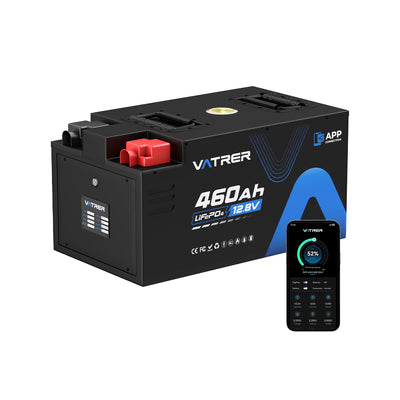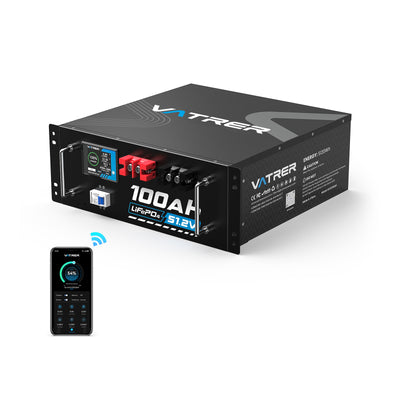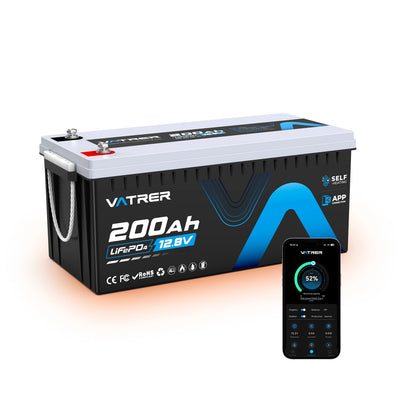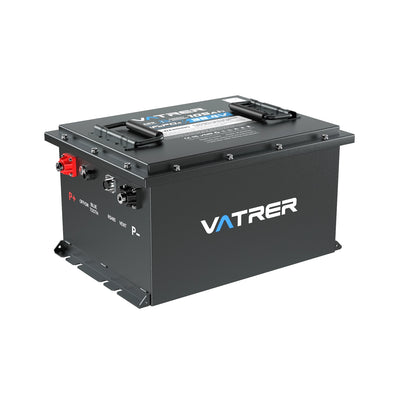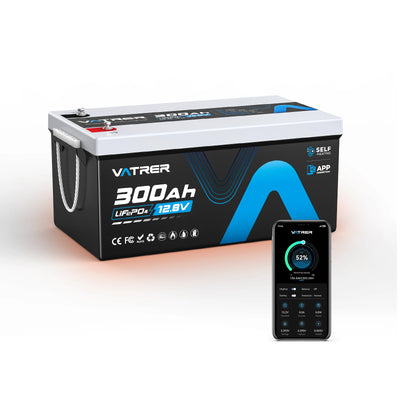Startseite
>
Erhalten Sie die neuesten Nachrichten aus der LiFePo4-Batteriebranche
>
Batterien in Reihe oder parallel: Verdrahten wie ein Profi ohne Rückblenden aus dem naturwissenschaftlichen Unterricht
Batterien in Reihe oder parallel: Verdrahten wie ein Profi ohne Rückblenden aus dem naturwissenschaftlichen Unterricht
von/ durch
XX
am Apr 28 2025
Reading time 5 minutes
Lernen Sie, Batterien wie der Lieblingsneffe eines Elektrikers zu verdrahten . Wir zeigen Ihnen, wann Sie Spannung stapeln (Reihenschaltung), die Laufzeit verlängern (Parallelschaltung) oder wie ein verrückter Wissenschaftler vorgehen (Reihen-Parallelschaltung) – ganz ohne Gleichungen und mit vielen Beispielen aus der Praxis.
Sie haben also einen Haufen Batterien herumliegen und versuchen herauszufinden, wie Sie sie anschließen können, ohne dass Ihr Projekt zu einer Heimwerkerkatastrophe wird.
Seriell oder parallel?
Klingt wie eine Frage, die Ihnen Ihr Naturwissenschaftslehrer in der Highschool stellen würde, oder? Keine Sorge – wir erklären es Ihnen, als würden Sie mit Ihrem Nachbarn über den Zaun plaudern. Am Ende wissen Sie genau, wie Sie Ihr Wohnmobil, Boot oder Golfcart wie ein Profi auf Vordermann bringen.
Warum die richtige Verkabelung von Batterien wichtig ist
Fangen wir einfach an: Batterien sind wie der Benzintank Ihres Autos – nur dass sie keinen Kraftstoff, sondern Strom speichern.
Die Art und Weise, wie Sie sie anschließen, bestimmt, ob Sie einen größeren Tank ( längere Laufzeit ) oder einen schnelleren Motor ( höhere Spannung ) erhalten. Wenn Sie hier Fehler machen, kann es passieren, dass die Batterie leer ist oder, schlimmer noch, ein geschmolzenes Chaos entsteht. Nicht cool.
So ist es: Reihenschaltung stapelt die Spannung wie Pfannkuchen. Parallelschaltung verdoppelt die Laufzeit wie ein BOGO-Angebot. Mischt man sie jedoch falsch, erfährt man, warum Rauch unangenehm riecht. Lassen Sie uns eintauchen.
Reihenschaltung: Wenn Sie mehr Schwung brauchen
Stellen Sie sich vor, Sie möchten einen Elektro-Bootsmotor mit 36 Volt betreiben, haben aber nur 12-V-Batterien. Kein Problem. Schalten Sie drei davon in Reihe – Plus an Minus, Minus an Plus – und schon haben Sie 36 V. Es ist wie beim Verketten von Eisenbahnwaggons: Jede Batterie trägt ihre Spannung zur Gesamtspannung bei, aber die Laufzeit (Amperestunden) bleibt gleich.
Beispiel: Drei 12-V-Batterien mit 100 Ah in Reihe = 36 V, 100 Ah. Perfekt für Geräte, die einen Spannungsschub benötigen, wie Golfwagen oder High-End-Trolling-Motoren.
V = 12V * 3 = 36V
Vorteile: Mit Reihenschaltungen können Sie kleinere, günstigere Batterien verwenden, um hohe Spannungswerte zu erreichen. Außerdem funktionieren dünnere Drähte, da die Stromstärke (Ampere) niedrig bleibt. Stellen Sie sich das so vor, als würden Sie ein Getränk durch einen Strohhalm schlürfen, anstatt aus einem Feuerwehrschlauch zu trinken.
Nachteile: Wenn eine Batterie leer ist, erlischt die ganze Kette – wie die Weihnachtsbeleuchtung in den 90ern. Auch das Laden kann knifflig sein. In Reihe geschaltete Batterien laden sich nicht immer gleichmäßig auf, daher ist ein Batteriemanagementsystem (BMS) als Schiedsrichter erforderlich. Profi-Tipp: Verwenden Sie identische Batterien. Ein Walmart-Sonderangebot mit einem Vatrer-Premium-Lithium zu kombinieren, ist wie Flip-Flops mit einem Smoking zu kombinieren. Das funktioniert einfach nicht.
Parallelverdrahtung: Wenn die Party weitergehen muss
Nehmen wir an, Ihr Wohnmobilkühlschrank gibt um 2 Uhr morgens ständig den Geist auf und verdirbt Ihnen so Ihren Mitternachtssnack. Eine Parallelschaltung der Batterien schafft Abhilfe. Verbinden Sie alle Plus- und Minuspole miteinander. So bleibt die Spannung gleich, die Laufzeit verdoppelt sich jedoch. Das ist, als würden Sie zusätzliche Benzinkanister auf die Ladefläche Ihres Trucks laden – mehr Kilometer, gleiche Geschwindigkeit.
Beispiel: Zwei parallel geschaltete 12-V-Batterien mit 100 Ah = 12 V, 200 Ah. Die Lichter Ihres Wohnmobils bleiben länger an, Ihr Telefon bleibt geladen und Ihr kaltes Bier bleibt kalt. Prioritäten.
100Ah * 2 = 200Ah
Vorteile: Parallele Systeme sind nachsichtig. Wenn eine Batterie den Geist aufgibt, halten die anderen die Lichter an (nur mit weniger Saft). Auch das Laden ist einfacher – die meisten 12-V-Ladegeräte können ein Parallelpaket ohne aufwendige Ausrüstung betreiben.
Nachteile: Sie benötigen dicke Kabel, um die höhere Stromstärke zu bewältigen. Wenn Sie hier sparen, könnten Ihre Kabel heißer werden als ein TikTok-Trend. Auch nicht passende, parallel geschaltete Batterien können für ein Drama sorgen. Eine Batterie könnte die gesamte Ladung verbrauchen oder die anderen entladen. Bleiben Sie bei der gleichen Marke, dem gleichen Alter und der gleichen Kapazität – wie bei einer Boyband ist Harmonie wichtig.
Serien-Parallel: Für die ultimativen Power-Nerds
Manchmal benötigen Sie sowohl Spannung als auch Laufzeit. Nutzen Sie die Reihen-Parallel-Verdrahtung. Diese Hybridschaltung ist wie der Bau eines Voltron-Batteriesystems. Gruppieren Sie die Batterien zunächst in Reihenpakete und verdrahten Sie diese dann parallel.
Beispiel aus der Praxis: Vier 12-V-Batterien → zwei Paare in Reihe (je 24 V) → dann diese Paare parallel schalten. Ergebnis? 24-V-System mit doppelter Amperestundenzahl. Perfekt für große Wohnmobile, Solaranlagen oder Boote, die das ganze Wochenende über unterwegs sein müssen.
Das Kleingedruckte:
Das ist nichts für Anfänger. Du brauchst passende Batterien, robuste Verkabelung und ein BMS, um alles in Ordnung zu halten. Aber wenn du es schaffst, wirst du dich wie Tony Stark fühlen, der den Iron Man-Anzug antreibt.
So verkabeln Sie sie (ohne den Schuppen niederzubrennen)
Für Serien
- Ordnen Sie Ihre Batterien wie Dominosteine an.
- Verbinden Sie den Pluspol von Batterie 1 mit dem Minuspol von Batterie 2. Wiederholen Sie den Vorgang.
- Überprüfen Sie die Gesamtspannung mit einem Multimeter. Wenn die Spannung nicht stimmt, liegt ein Wackelkontakt vor – oder die Batterie ist leer.
Für Parallel
- Parken Sie die Batterien nebeneinander.
- Verbinden Sie alle Pluspole mit dicken Kabeln, dann alle Minuspole.
- Schließen Sie Ihr Gerät an die gegenüberliegenden Enden des Pakets an. Dies gleicht die Last aus und verhindert, dass Elektronen träge werden.
Ausrüstung, die Sie benötigen
- Hochleistungskabel (kein Billigschrott).
- Crimpzangen, Schrumpfschlauch und eine gesunde Angst vor Funken.
Aufladen: Seien Sie nicht der Typ, der seine wertvollen Batterien frittiert
Reihenladung: Verwenden Sie ein Ladegerät, das der Gesamtspannung Ihres Akkus entspricht. Wenn Sie eine 36-V-Reihenschaltung haben, benötigen Sie ein 36-V-Ladegerät. Ungleichmäßiges Laden? Schuld daran sind nicht passende Akkus oder ein fehlendes BMS.
Paralleles Laden: Einfacher Modus. Ein Standard-12-V-Ladegerät funktioniert, aber behalten Sie ältere Batterien im Auge. Sie könnten nachlassen, während die neuen die ganze Arbeit erledigen.
Goldene Regel: Mischen Sie niemals verschiedene Batterietypen. Lithium-, Blei-Säure- und AGM-Batterien sind wie Hund und Katze – sie vertragen sich nicht gut. Bleiben Sie bei einer chemischen Zusammensetzung, um Kernschmelzen zu vermeiden.
Häufige Fragen (weil wir wissen, dass Sie das immer noch mit Argwohn betrachten)
Kann ich alte und neue Batterien mischen?
Technisch ja, aber realistisch gesehen nein. Eine alte Batterie zieht die neuen in Mitleidenschaft, wie ein Freund, der jedes Mal, wenn Sie ausgehen, seine Brieftasche „vergisst“.
Welches Setup hält länger?
Parallel = längere Laufzeit. Serie = höhere Spannung. Die Lebensdauer der Batterie? Das hängt davon ab, wie gut Sie sie behandeln. Halten Sie sie sauber, geladen und vor extremer Hitze geschützt.
Wie viele Batterien kann ich anschließen?
Bis sich Ihr Partner über das Durcheinander beschwert. Nur ein Scherz – es gibt keine feste Grenze, aber bleiben Sie praktisch. Mehr Batterien bedeuten mehr Gewicht, Kosten und Komplexität.
Das Fazit
- Serie = Spannungsverstärkung (gut für Hochleistungsgeräte).
- Parallel = Laufzeitsteigerung (gut für Marathonsitzungen).
- Seriell-Parallel = Das Beste aus beiden Welten (für leistungshungrige Nerds).
Und hey, wenn Ihnen das zu viel ist, greifen Sie zu einer Lithiumbatterie mit integriertem BMS. Sie sind wie der Tesla unter den Batterien – intelligent, elegant und schwer zu beschädigen.
Gehen Sie voran und meistern Sie Ihren Strombedarf. Und denken Sie daran: Wenn Sie Brandgeruch wahrnehmen, ziehen Sie zuerst den Stecker, bevor Sie in Panik geraten.
Teilen





























